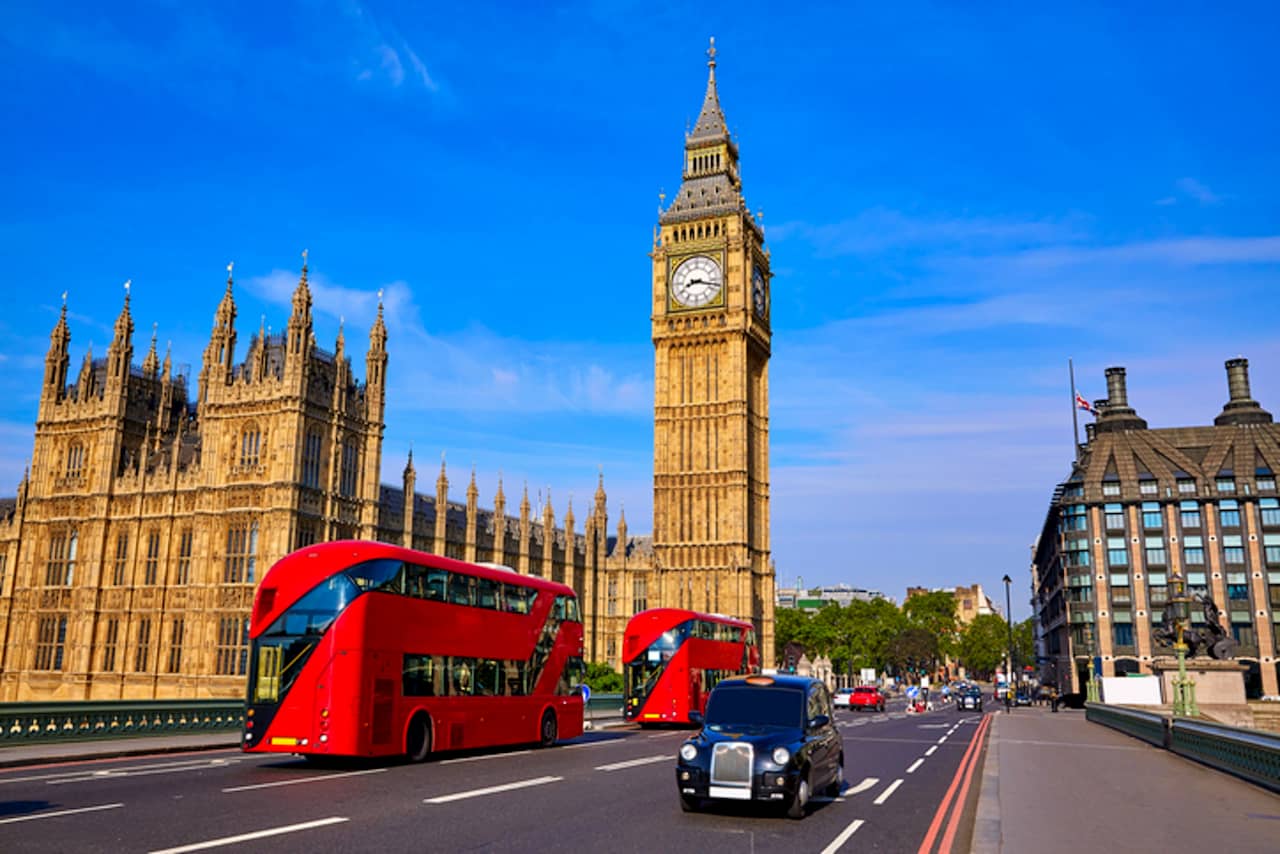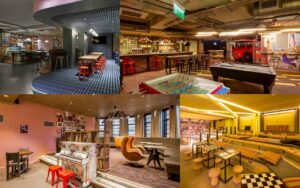London, capital of England and the United Kingdom, is a 21st century city with a history that dates back to Roman times.
Still, it’s a city that has everything and anything you could want in a vibrant, world-class city.
The city breathes history and modernity in every corner. An urban labyrinth where tradition intertwines with innovation, creating a unique atmosphere of culture and diversity.
At its center are the imposing Houses of Parliament, the iconic “Big Ben” clock tower and Westminster Abbey, site of the coronations of British monarchs. Across the River Thames, the London Eye Ferris wheel offers panoramic views of the Southbank cultural complex and the entire city.
London requires several days to really get to know it, as the hardest part is choosing from so many options what to do in your short time in the city.
Covent Garden’s winding cobblestone alleyways reveal the city’s bohemian essence, while the markets on Portobello Road in Notting Hill display bright colors and a mix of cultures. The majestic Tower of London, guardian of secrets and legends, stands imposingly on the banks of the river, contrasting with the dazzling modernity of the Shard, which rises on the horizon, defying the heavens.
Parks such as Hyde Park and Regent’s Park offer refuge from the hustle and bustle of the city, inviting everyone to a moment of tranquility amidst the hustle and bustle. Iconic museums, such as the British Museum and the National Gallery, house treasures that tell stories from around the world, offering a journey through time and civilizations.
See my visit to London and England.
A little history of London:
The origin of the founding of the city of London dates back to the Romans around 50 AD, when it was called Londinium on the banks of the River Thames. This strategic location offered commercial and defensive advantages, making it an important urban center within the Roman Empire.
With the decline of the Roman Empire, London went through turbulent periods, including Anglo-Saxon invasions and Viking raids in the following centuries. However, it emerged as a significant commercial center during the Middle Ages, becoming the capital of the United Kingdom in 1066, when William the Conqueror was crowned king of England.
During the following centuries, London prospered as an important political, commercial and cultural center. In the 17th century, it faced the Great Plague and the Great Fire of 1666, events that shaped its landscape and urban history.
In the 19th century, the industrial drive and expansion of the British Empire positioned London as the largest city in the world for a period.
Throughout the 20th century, the city went through wars, including bombings during the Second World War, which caused significant damage to its infrastructure. After the war, London faced a process of reconstruction and modernization.
Main attractions
1. Take a free walking tour.
In my opinion, the best way to discover a new destination is to go on walking tours.
Today major cities have free walking tours which are an economical way to see the main sights, learn about the destination, meet new people.
London, with its history, has an incredible variety of tourism.
Many are themed such as The Art of Faith, Great Fire of London, The Medieval City, Roads to Rome, Historic City of London, etc.
Choose what you like best and enjoy.
2. Go to the Tower of London.
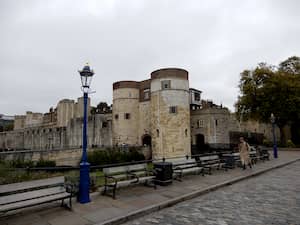
Tower of London: Built by William the Conqueror in 1066, it had many uses.
It was the place where Henry VIII ordered the execution of two of his wives.
Today this medieval fortress houses the Crown Jewels and offers fascinating tours.
3. Relax in London's verdant royal parks.
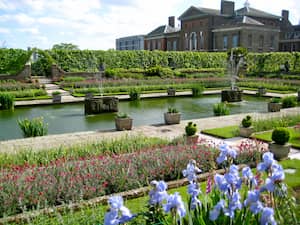
Hyde Park is one of the largest in the city, originally it was a space for the monks of Westminster Abbey to hunt deer, but now it is the kind of space where you can find everything.
Kew Gardens: A spectacular 2km square garden in west London, Kew has one of the largest and most diverse botanical collections in the world.
It’s a calm and peaceful place, but you can also learn a lot about plants along the way.
4. See the changing of the guards at Buckingham Palace.
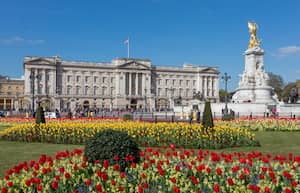
Nothing more London than watching the Changing of the Guard ceremony at Buckingham Palace is a traditional and unmissable spectacle.
Built in 1703 for the Duke of Buckingham and later acquired by King George III, Buckingham Palace has been the official living quarters of the Royal Family in London since 1837.
5. London has the best museums.
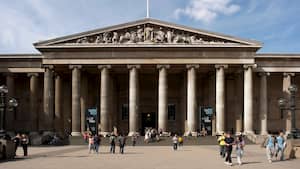
London is one of the best cities in the world for culture, with several free museums to enjoy
British Museum: A vast collection of art and antiquities from around the world.
National Gallery: A collection of Western art from the 13th century to the 19th century, with works by great masters such as Van Gogh, da Vinci, Rembrandt and many others.
Museum of London: Tells the story of the city from prehistoric times to the present day, displaying artifacts and interactive exhibits. Between others.
6. Visit Westminster Abbey.
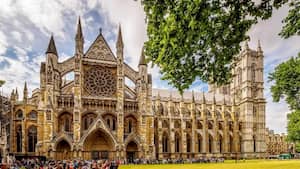
It is an icon of Gothic architecture and the site of many coronations, funerals and royal weddings.
17 monarchs are buried and 16 royal weddings have been held, the most recent being that of Prince William and Catherine Middleton in 2011.
7. Stroll along the River Thames.
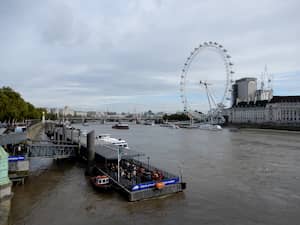
The Thames has been the backbone of London for centuries. It is the longest river in England.
And it had strategic importance for the Romans and the English kings, as well as during the two world wars.
A river cruise offers magnificent views of many of London’s landmarks such as Big Ben, Tower of London, London eyes, etc.
8. Visit Shakespeare's story.
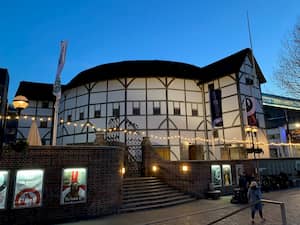 .
.
A visit to the historic Globe Theater, which has been reconstructed, offers a unique experience and connection to Shakespeare’s legacy.
9. Watch a play in the West End.
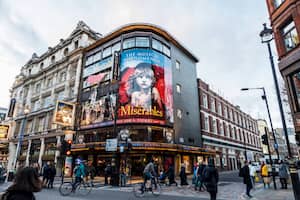
For theater lovers, it is unmissable to watch a play in the West End, in London.
It has a quality comparable to Broadway in the United States.
If you’re not that fond of it, it’s worth enjoying the atmosphere, specifically near the lively Leicester Square, where many of the theaters are concentrated.
10. Explore the city's markets.
 .
.
Camden Market, Portobello Road Market and Borough Market are great for exploring food, antiques and fashion.
11. Discover London pubs.
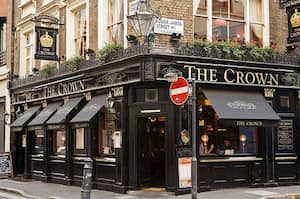
Going to London without enjoying its pubs is almost as if you never knew it.
Pub culture is part of London’s DNA, and the pub is the best place to see local people and a pint is the cornerstone of a good night out on the town.
12 Ride the Ferris wheel.
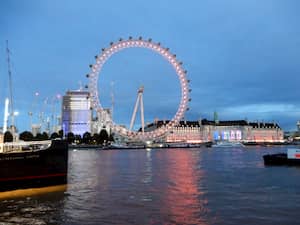
The London Eye (London’s 120 meter tall Ferris wheel) is on the River Thames and was designed to offer great views.
It circles slowly, offering an unbeatable 360-degree panoramic view of London.
13 Visit the Warner Bros studio (Harry Potter).
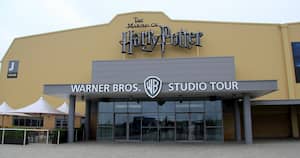 Studios where all eight “Harry Potter” films were produced, this is a must-see for anyone wanting to learn more about the Wizarding World. Visitors can see original film sets – from the Great Hall to Gringotts, from Diagon Alley to the Gryffindor Common Room – with hundreds of original props and costumes to explore. See the model used for Hogwarts Castle, learn about Hagrid’s animatronic head, visit Platform 9 ¾ and board the Hogwarts Express; This is a comprehensive, interactive tour for the whole family that’s worth adding to your London bucket list.
Studios where all eight “Harry Potter” films were produced, this is a must-see for anyone wanting to learn more about the Wizarding World. Visitors can see original film sets – from the Great Hall to Gringotts, from Diagon Alley to the Gryffindor Common Room – with hundreds of original props and costumes to explore. See the model used for Hogwarts Castle, learn about Hagrid’s animatronic head, visit Platform 9 ¾ and board the Hogwarts Express; This is a comprehensive, interactive tour for the whole family that’s worth adding to your London bucket list.
14 Visit the Ground Zero of the World.
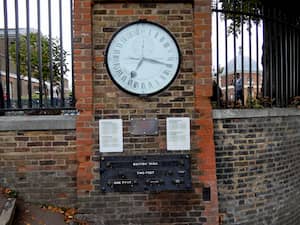 Greenwich’s claim to fame is undoubtedly the Royal Observatory, where the prime meridian bisects the institution and travelers can stand in both the eastern and western hemispheres. Other favorite museums and attractions include Greenwich Market, the Cutty Sark, the National Maritime Museum and Greenwich Marke
Greenwich’s claim to fame is undoubtedly the Royal Observatory, where the prime meridian bisects the institution and travelers can stand in both the eastern and western hemispheres. Other favorite museums and attractions include Greenwich Market, the Cutty Sark, the National Maritime Museum and Greenwich Marke
15 Visit to the famous Piccadilly Circus.
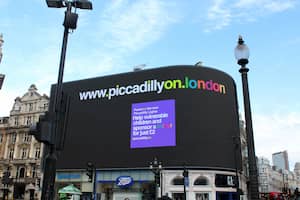
Piccadilly Circus has been a busy place since the 17th century, when it was a commercial center.
Today it is still the heart of the West End, a square filled with bright lights and large electronic screens.
Within easy reach of some of London’s biggest theaters and clubs, including the Criterion Theatre. The Statue of Eros, in the center of the circus, is itself a popular meeting point and tourist destination.
16 Visit Harrods, the most famous store in London.
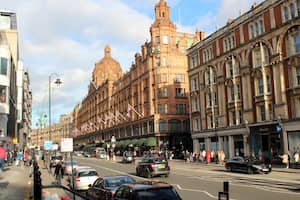
Harrods, opened in 1824, is one of the most famous department stores.
Luxury is spread across several floors, stylishly arranged in Harrods themed salons. The Egyptian salon sells fashion in opulent style to make you feel like a pharaoh as you pass by.
At Christmas, Harrods puts together a range of luxurious Christmas hampers filled with goodies to make the festivities even more special.
17 For shopping lovers - Visit Oxford street.
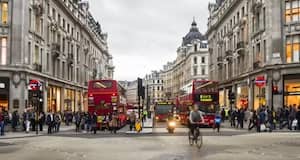 Oxford Street is not only London’s main shopping location, but also the busiest shopping street in Europe. It has 300 stores and receives more than 500 thousand visitors every day.
Oxford Street is not only London’s main shopping location, but also the busiest shopping street in Europe. It has 300 stores and receives more than 500 thousand visitors every day.
Best time to visit London.
The best time to visit London depends on your choice and personal preferences regarding the climate, activities and desired level of tourist movement. Each station offers a unique experience in the city.
Winter (December to February):
Winter can be cold and wet, but it is also a magical time due to the Christmas decorations and festive markets. The crowds are smaller, and you can find better deals on accommodation.
Spring (March to May):
It’s generally a beloved time to visit. Temperatures begin to rise, parks and gardens bloom, and there is a feeling of renewal in the city. The months of April and May tend to be more pleasant in terms of weather and less busy than summer.
Summer (June to August):
It’s high season. The days are longer, the weather tends to be warmer, and many outdoor events and festivals take place during these months. However, expect to find more tourists and higher prices on accommodations and attractions.
Autumn (September to November):
It’s a lovely time, especially in early autumn when the leaves change color. The weather tends to be mild, and accommodation prices can be more reasonable than in summer.
How to get to London.
Getting to London is relatively easy, as the city is an important transport hub in Europe. There are many direct flights from Brazil.
Main means of transport.
Airplane: Heathrow Airport is London’s main airport, one of the busiest in the world, and receives flights from different parts of the world.
There are several public transports, bus, train and taxi options available to take you from the airport to central London.
Train: Eurostar connects London to several European cities, such as Paris and Brussels, via the Channel Tunnel. Within the United Kingdom, there are national and regional rail services that connect London with several other British cities.
I used the train coming from Brussels.
Buses/Coaches: Bus companies offer regular services to London from many cities in the UK and other European countries.
Car: If traveling within the UK, driving to London is a viable option. However, traffic in the city can be congested, and parking can be expensive and limited in the center.
Getting around London.
For me, the best ways to get around are always on foot and public transport.
That’s why I always stay close to attractions and/or public transportation.
London is a very big city, but the public transport system is very efficient.
In London, the public transport system is extensive and efficient, offering several options for getting around the city:
Tube: The London Underground, known as the “Tube”, is one of the fastest and most popular ways to get around the city. It has several lines that connect the main tourist attractions and neighborhoods in London.
Bus: London’s bus network is extensive and covers areas that may not be served by the Tube. It’s a slower option, but it offers a different view of the city and can be useful for reaching places not accessible by metro.
Suburban trains (Overground and National Rail): In addition to the subway, London has suburban trains that connect the city to more distant areas and other cities in the United Kingdom. The London Overground and National Rail are an integral part of the public transport system.
Boats: The River Thames runs through London, and boats offer a unique perspective on the city. Thames Clippers are a river transport option that can be used for river trips.
Taxis and Uber: London’s iconic black cabs, known as “black cabs”, are a convenient option, although they are generally more expensive. Additionally, Uber and other app-based transportation services are available in the city.
Bike: London has a bike rental system known as Santander Cycles, which offers an affordable and healthy way to explore the city. There are several cycle paths and routes for cyclists in London.
What is the best neighborhood to stay in London?
I always keep the location in mind when choosing where to stay, as it influences the way I get to know the place.
For me the location must have it.
- Being close to public transport.
- Being within walking distance of the main attractions.
- Easy to get to and from, if possible, by walking.
- Better transportation cost.
- Be no more than 3 km from the city center and/or attractions.
London is a very big city, with options for all tastes.
The main ones are:
Covent Garden: Located in the heart of London, it is a vibrant area with theaters, shops, restaurants and easy access to tourist attractions such as the British Museum and the West End.
Soho: Known for its lively nightlife, theaters, diverse restaurants and proximity to areas such as Leicester Square and Chinatown.
Kensington: An elegant and sophisticated area, home to museums such as the Victoria and Albert Museum and the Science Museum, as well as beautiful Hyde Park.
Notting Hill: Famous for Portobello Road market, it has a quirky charm, picturesque streets, cofe shop and antique shops.
South Bank: On the banks of the River Thames, it is a cultural destination with the London Eye, Tate Modern, theaters and spectacular views of the city.
Shoreditch: Known for its arts scene, graffiti, street markets, cool cafes and lively nightlife.
Camden: An alternative neighborhood, with the famous Camden Market, live music, eccentric shops and a vibrant atmosphere.
Westminster: Close to iconic tourist attractions such as Buckingham Palace, Westminster Abbey and Big Ben.
Where to stay.
Over time, the way we travel and stay changes.
I’ve been to 5-star hotels and hostels with shared rooms for up to 10 people.
Today I have been looking for a new way to stay that is a mix of Airbnb and hotels.
They are “apartments”, small or not with the infrastructure to cook, so in addition to having better privacy, they save on the cost of meals and I am not paying for infrastructure that I do not use, such as a swimming pool, gym, etc.
They are classified between economic and medium, but with very significant savings.
I explain better here.
Economic :
Aloha Hostel is set in London, 1.9 km from London Expo – Porte de Versailles and 1.9 km from Eiffel Tower.
Rooms are equipped with a shared bathroom and offer free WiFi throughout the property.
Average:
Ibis London Tour Eiffel Cambronne 15ème
Located in London’s 15th district, just a 15-minute walk from the Eiffel Tower, ibis Londres Tour Eiffel offers a 24-hour reception, free Wi-Fi throughout and luggage storage. Cambronne Metro Station is just 150 meters away.
LUX:
Novotel London Les Halles
Novotel Londres Les Halles is situated in the heart of London. From this hotel, you can shop in the nearby neighborhoods of Rue de Rivoli, Boulevard Haussmann or Rue du Faubourg Saint-Honore.
Gastronomy in London.
London cuisine is incredibly diverse and offers a variety of delicious dishes.
Some of the Main Dishes.

Fish and Chips:
Nothing more British than the classic breaded fried fish served with chips, usually accompanied by tartar sauce.
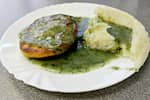
Pie and Mash:
Meat pie cooked with mashed potatoes and gravy.

Afternoon tea:
A British tradition consisting of tea served with a selection of sandwiches, cakes, scones and jam.
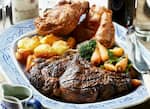
Sunday Roast:
A beef roast, traditionally served on Sundays, with sides such as Yorkshire pudding, vegetables, gravy and roast potatoes.

Yorkshire Pudding:
It is a dumpling made with flour, milk and eggs, which can be used to accompany both savory dishes, with roast meats and sauces, and sweet dishes, such as fruit jellies.
 CORNISH PASTY:
CORNISH PASTY:
This is a typical dish from the Cornwall region, which consists of a dough made from flour and potatoes, normally stuffed with meat and onion. It is quite similar to Argentine empanadas.
Tipical drinks:

Pimm’s:
Pimm’s is a British alcoholic drink known for being served as a Pimm’s Cup, a refreshing mix of Pimm’s, lemonade, fruit and herbs, popular in the warmer months.

Cider:
Cider, an alcoholic drink made from fermented apples, is enjoyed in many London pubs and bars, especially during the warmer months.
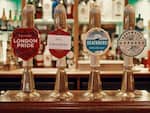
Ales and Beers:
With a growing craft beer scene, there is a wide range of local beers and ales to try in the city’s pubs and bars.

Gin:
London has a rich history linked to gin. London Dry Gin is a specific and influential category of dry gin, very popular in cocktails such as the classic Gin and Tonic.
2 day itinerary in London.
In my experience, any city can be well visited in two full days.
Depending on the type of visit you want to make.
However, London may or may not be one of the exceptions, depending on what you really want to see.
If you just focus on the main attractions, two days is more than enough.
If you want to see the museums and enjoy the city more, you will need a few more days.
Anyone who thinks about London certainly wants to see many of the places with the Tower of London, Big Ben. Buckingham Palace, Parliament, the Ferris Wheel.
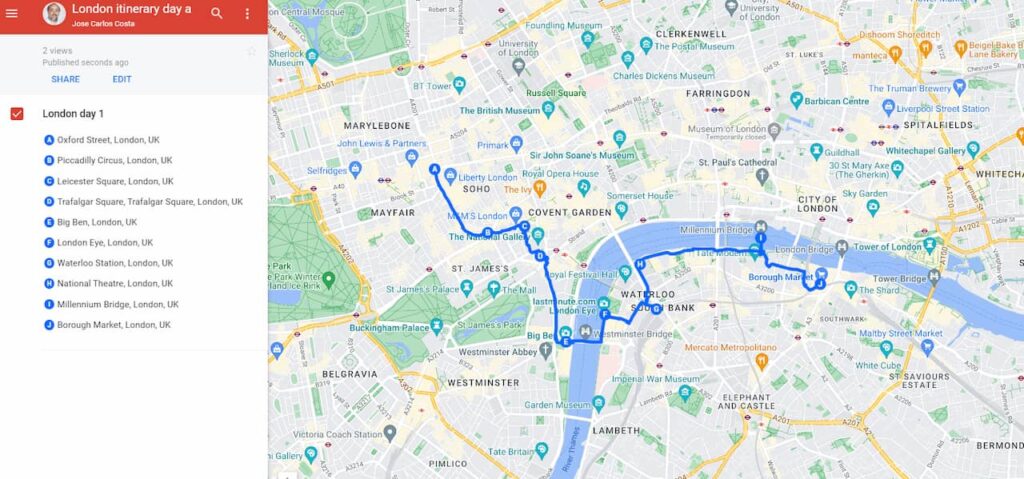
First day.
Start the day with a walk along Oxford Street early in the morning for a more relaxed walk, but later in the day it gets very crowded.
See the London Underground map here (Tube) https://tfl.gov.uk/tfl/syndication/widgets/tubemap/default-search.html
Depending on how far along the walk you go, you will reach Hyde Park, but much earlier, going down towards the Thames, you will reach the famous Piccadilly Circus.
With the large bright advertising billboards, numerous road intersections, street performers and crowds, it is a city meeting point.
Very close is Leicester Square, where there are cinemas, green space, many statues and several restaurants, a good place to enjoy the city.
A further 10-minute walk towards the river is Trafalgar Square, where the National Gallery is located.
In the center of the square there is a granite column almost 50 meters high with a statue of Admiral Nelson and surrounded by four large lions.
Very close to the Thames is Westminster Bridge and one of the most famous places in London.
It has Westminster Abbey, Houses of Parliament and Big Ben
Unfortunately for me, Big Ben was undergoing restructuring, but it is now operational after 5 years of renovation.
After lots of photos, it’s time to cross the bridge and climb onto the London Eyes, the Ferris wheel.
From there you have a 360 degree view of the city.
As it is always very crowded, it is best to buy tickets online in advance so you can skip the line.
After watching the London Eye continue down the river along the South Bank, pass through Waterloo station.
A good place to stop for lunch.
Go towards Waterloo Bridge, the national theater, walking along the riverbank, passing through the Millennium Bridge, with St Paul’s Cathedral in the background, until you reach the Borough Market.
Borough Market is a great place to try some of London’s famous street food. There are countless different stalls selling food from all over the world.
Next to Borough Market is the Shard, a 95-storey skyscraper with one of the best views of London.
There is an observation platform on the 70th floor, tickets cost approximately US$45.00.
Time to cross Tower Bridge.
Anyone who wants to visit the Tower of London must book an appointment online or just visit its surroundings.
Good place to end the day.
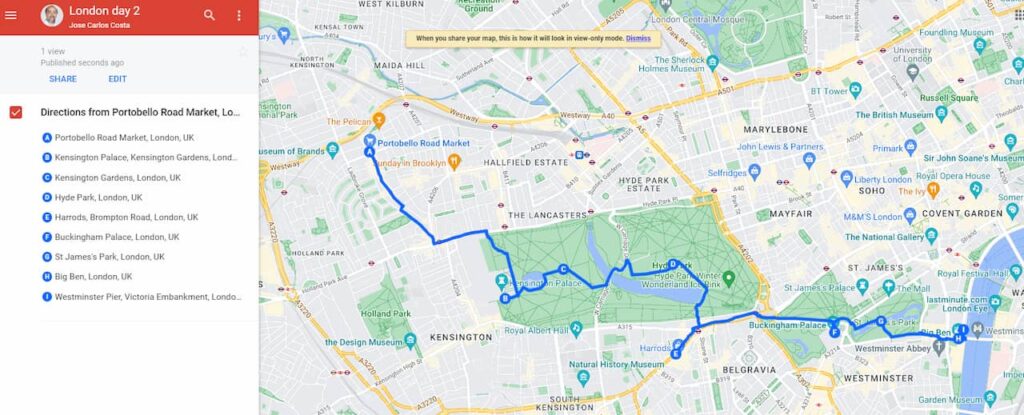
Second day
One of London’s biggest attractions is the changing of the guard at Buckingham Palace.
But to see it you need to plan.
Although I will stop by the Palace, but not to see the changing of the guard.
Check the conditions to see if you can change your itinerary to fit the view from the guard.
Buckingham Palace has been the administrative headquarters and official residence of the British monarchy in London since 1837. It was where Queen Elizabeth II lived, who reigned for 70 years.
It was built in 1703, has 775 rooms, as well as 92 offices and 78 bathrooms, a post office, cinema, swimming pool, doctor’s office and jewelry store. The palace garden is the largest private garden in London, including a tennis court and lake.
The Changing of the Guard is one of the oldest ceremonies associated with Buckingham Palace.
It takes place on Mondays, Wednesdays, Fridays and Sundays at 11am.
The ideal is to arrive 1 hour in advance, because the police cordon off the front of the palace.
If you want to stay together, the grid must arrive early. As I don’t like the tightness and the waiting time, I stayed close to the kneecap with the Queen Victoria monument, which has a good view.
Start of the itinerary.
This itinerary is for enjoying the architecture, charming neighborhoods and strolling through the parks.
Who hasn’t seen the movie “Notting Hill”, starring Julia Roberts and Hugh Grant?
It showcased many of the features of Portobello Road around the world.
This route starts on Portobello Road, which is a famous street located in the Notting Hill neighborhood.
It is known for its vibrant street market, which attracts locals and tourists from around the world. The Portobello Road market is especially famous for its stalls selling antiques, vintage clothing, art, souvenirs, fresh food and a wide range of products.
The main market takes place mainly on Saturdays, when the streets are filled with vendors displaying their wares and crowds strolling and shopping
The stores open between 9 and 10 am and this makes the trip more pleasant, as you can enjoy the quieter place.
Notting Hill is a charming neighborhood to admire the Victorian architecture of London’s beautiful streets.
After wandering around the neighborhood, head towards Kensington Palace and gardens
Kensington Palace is a royal residence located in the beautiful Kensington Gardens, known for its rich history and for having been home to several important British royal figures over the centuries.
Kensington Gardens, on the other hand, are stunning and offer a serene atmosphere. The gardens are well-kept, with expansive lawns, pretty flower beds, ponds, and even the Serpentine Gallery Pavilion, which showcases contemporary art.
Continuing straight ahead is Hyde Park, the largest and most famous royal park in London, known for its natural beauty, recreational activities and cultural events.
It’s a true oasis in the heart of the city and a very popular spot for Londoners, especially in the summer.
Now it’s time to visit the famous Harrods.
Harrods, founded in 1824, is the most famous department store in England.
With more than 90,000 square meters of space, Harrods sells everything in 330 departments spread over 7 floors.
After shopping at Harrods, time to visit Buckingham Palace
Buckingham Palace has been the administrative headquarters and official residence of the British monarchy in London since 1837. It was where Queen Elizabeth II lived, who reigned for 70 years.
It was built in 1703, has 775 rooms, as well as 92 offices and 78 bathrooms, a post office, cinema, swimming pool, doctor’s office and jewelry store. The palace garden is the largest private garden in London, including a tennis court and lake.
Now crossing ST James Park you reach the banks of the River Thames near Big Ben.
Time to take a cruise on the River Thames for 2 hours at dusk, the time of day that offers the best views of the city.
How much does it cost?
3 styles and their costs
Backpacker:
Stayed in hostels using shared dormitories, eating your own food and/or cheap local restaurants, using local transport, exploring the city on foot and taking tours for free or cheaper.
Daily expenditure: from US$ 70.00 to 90.00 per day
Intermediary:
Stay in hostels/budget hotels in private rooms, eat in a medium-sized restaurant, go to the main paid attractions, use some taxis and Uber.
Daily Spend: $150.00 to 250.00 USD per day.
Luxurious:
Stayed in the best hotels, go to all the attractions, hire more sophisticated packages such as use of a helicopter, etc.
Daily spend: US$280.00 and above per day
